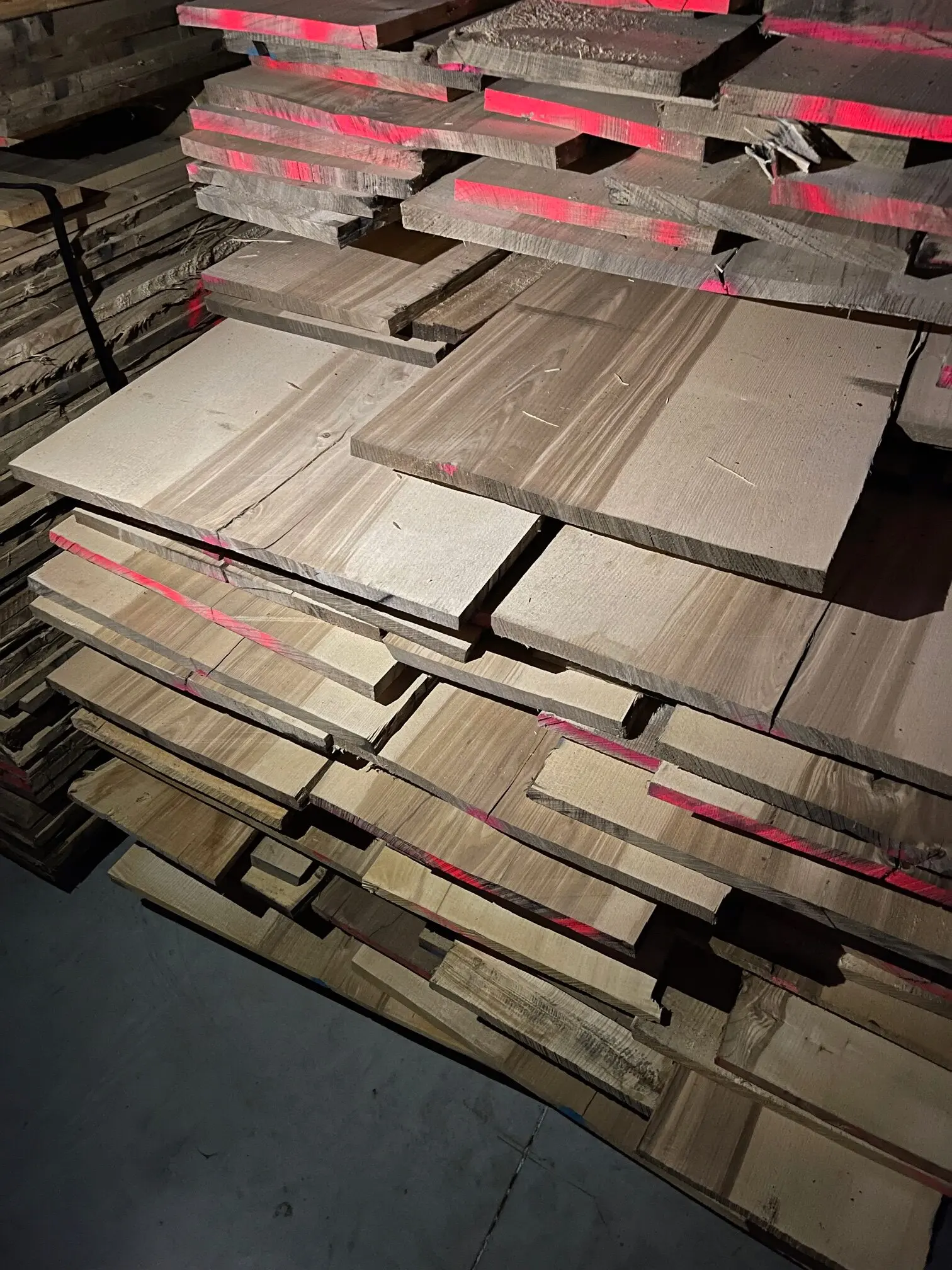Whether you’re a furniture maker, architect, interior designer, or builder, Ash Timber is a material worth knowing. Known for its strength, light colour, and excellent workability, ash has long been a favourite in both traditional and contemporary woodworking. In this blog, we’ll explore the key characteristics, uses, and advantages of Ash Timber, along with tips for sourcing, finishing, and maintaining it.
What is ash timber?
Ash Timber comes from the ash tree, a hardwood species commonly found in Europe and North America. It is recognised for its pale cream to light brown colour, straight grain, and smooth texture. These qualities make ash both visually appealing and easy to work with. Its impressive strength-to-weight ratio makes it a practical choice for structural as well as decorative applications.
Ash is often compared to oak due to its hardness and density, but it typically has a more uniform appearance and slightly lighter tone, which lends itself well to modern, minimalist design aesthetics.
Why choose ash timber?
There are many compelling reasons to use Ash Timber in your projects:
- It offers exceptional strength and flexibility, ideal for furniture that requires shaping or bending.
- It has a light, clean appearance that suits both traditional and contemporary styles.
- It’s easy to machine, sand, and finish, making it suitable for intricate joinery.
- It is often more affordable than other hardwoods like oak or walnut.
- It’s available in both solid and veneer formats, allowing for diverse applications.
With these benefits, Ash Timber proves to be one of the most versatile choices on the market today.
Curious about working with other premium hardwoods? Read our deep dive into Quarter Sawn Oak for a contrast in grain and finish.
Common uses of ash timber
Thanks to its combination of strength and aesthetics, Ash Timber is used in a wide range of applications:
- Furniture making: Chairs, tables, desks, and beds often feature ash due to its durability and beautiful grain.
- Interior joinery: Skirting boards, doors, and stairs are frequently crafted from ash for a clean, uniform look.
- Flooring: Ash’s shock resistance makes it suitable for both residential and commercial flooring.
- Tool handles and sports equipment: Its flexibility makes it ideal for handles, bats, and paddles.
- Architectural features: Wall panelling, ceiling beams, and balustrades in both modern and rustic interiors.
Each of these uses benefits from ash’s unique combination of light colour, strength, and flexibility.
Ash timber vs other hardwoods
While Ash Timber shares similarities with oak, maple, and beech, it stands out in several key ways:
- It is more elastic, making it ideal for curved furniture or bentwood applications.
- Its grain is consistently straight, resulting in cleaner finishes after sanding or oiling.
- It is often lighter in colour, providing a brighter, more contemporary feel.
- It typically absorbs stains and finishes well, allowing for greater design flexibility.
Ash is especially appreciated in Scandinavian and Japanese-inspired interiors, where simplicity and light wood tones are prized.
For more modern timber design inspiration, check out our post on Timber Cladding, perfect for contemporary interiors and exteriors.
Sustainability and responsible sourcing
Like all wood products, Ash Timber should be sourced responsibly. Many suppliers now offer FSC- or PEFC-certified ash, ensuring the wood comes from sustainably managed forests. This not only protects biodiversity but also supports long-term availability of this beautiful hardwood.
By choosing certified Ash Timber, you’re investing in a renewable material that aligns with modern environmental standards and supports the timber industry’s future.
Looking to build green? Explore our article on Sustainable Timber for tips on eco-conscious construction.
Working with ash timber
One of the biggest advantages of Ash Timber is how easy it is to work with. Whether cutting, shaping, or finishing, ash responds beautifully to craftsmanship:
- It machines cleanly and holds edges well.
- It bends easily when steamed, ideal for curved work.
- It sands to a smooth surface and accepts both stains and clear finishes.
- It holds glue and fasteners reliably for strong joints.
Because of its workability, Ash Timber is a favourite among both beginner and experienced woodworkers.
Maintenance and care tips
Keeping Ash Timber looking its best is straightforward with proper care:
- Dust regularly with a soft cloth to maintain its smooth surface.
- Avoid direct sunlight to prevent discolouration over time.
- Apply finishes such as oils, waxes, or sealants to protect against wear and stains.
- Check for moisture in high-humidity areas, especially for flooring or panelling.
With the right maintenance, Ash Timber can retain its beauty and strength for generations.
Conclusion
Ash Timber is an ideal combination of strength, beauty, and flexibility. Its light tone and fine grain make it perfect for everything from elegant furniture to high-traffic flooring. Whether you’re creating a timeless interior or crafting modern architectural features, Ash Timber delivers reliable performance and refined aesthetics. Looking for premium-quality Ash Timber for your next project? At Wholesale Timber, we offer sustainably sourced, expertly graded ash that meets the highest standards. Contact us today to explore our full range and bring your vision to life with confidence and character.
This blog explores the benefits, uses, and features of Ash Timber, a light, strong, and versatile hardwood. From furniture to flooring, ash is easy to work with and sustainably sourced. Wholesale Timber offers top-grade ash for all your design and building needs.
